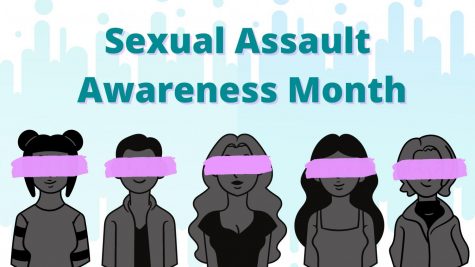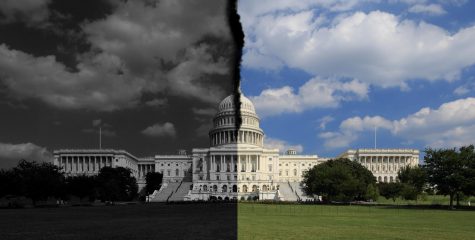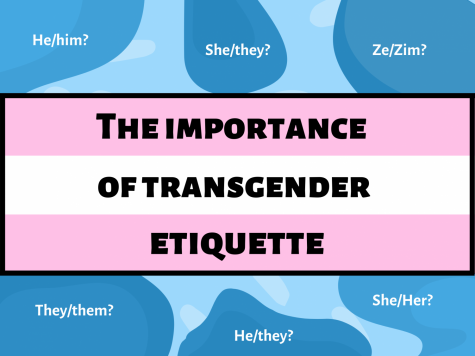Digging Deep for Free Speech
Abdulla Eisa, senior, started his daily routine of walking from class to class, but he noticed something that stopped him in his tracks. Among the colorful posters promoting the Trans Youth club and school trip to Belize, stood a poster for a club with a pro-Israel agenda.
Eisa, who supports the pro-Palestine cause, is okay with having a club supporting pro-Israeli beliefs, he thought that having a visual poster for the club hanging in the hallways of HHS crossed the line.
“I have had about 60 of my family members either killed or imprisoned by the Israeli Defense Forces (IDF),” Eisa said. “My mother gets a daily call informing us about yet another family member of ours who has been killed.”
Eisa, along with many other pro-Palestine supporters, took action into their own hands and lodged a complaint against the posters hanging on the wall. These complaints had been viewed by Doug Bullinger, principal, in which was later passed on to higher administration consisting of Dr. Rhoda Mhiripiri-Reed, superintendent, and Alex Fisher, Director of Community Education.
While the principles of the First Amendment such as freedom of speech, religion, assembly, press, and petition of government are fundamental to maintaining American democracy, the fine line between right and wrong is ambiguous and up for interpretation. When it comes to student voice in particular, the fine line becomes even finer.
Universally, U.S. courts allow schools to regulate specific types of student expression, resulting in the prohibition of rhetoric or acts that disrupt the school environment, or invades the rights of others.
The 1969 Supreme Court case Tinker v. Des Moines set a precedent for students to possess the rights to the First Amendment in schools. The court decision was that students “do not shed their constitutional rights to freedom of speech or expression at the schoolhouse gate.”
Despite the landmark case, the Freedom Forum Institute says that there are fundamental differences between the freedom of speech students hold in and out of school, in addition to the freedoms that are upheld in private versus public schools.
“I believe that the First Amendment shouldn’t cover any forms of racism, religious intolerances, sexism, or homophobia,” said the student who wishes to remain anonymous. “Unfortunately, more often than not, all the First Amendment does is protect the people who are saying hateful things.”
As the First Amendment is open to interpretation, problems have occurred with HHS dealing with religious tensions.
“People say and do whatever they want because they are safe behind policy 505,” Eisa said. “What these people don’t realize is that what they are saying are deeply traumatizing.”
In response to Eisa’s issue, administration school sanctioned listening sessions and a fishbowl discussion, which occurred on Monday, Nov. 25 and Tuesday, Nov. 26.
Over the past three years, the administration has attempted to integrate more student voices into the Hopkins community. In the spring of 2018, HHS sanctioned a school walk out, in protest of gun violence. Additionally, come winter 2018, the administration supported a school-wide sit in, as a way to spread awareness of sexual assault. During the sit-in, in addition to speeches made by sexual assault survirors, Mr. Bullinger was present and expressed support of the event.
Although retrograde cases of students utilizing the First Amendment have been socially driven, the recent turbulence have risen out of student’s religious and moral standards.
Hezzy Segal, junior, is co-president of the HHS chapter of Students Supporting Israel (SSI) club, which was brought up during the fishbowl.
“The posters were initially approved by the administration, yet there is a cycle of putting them up, just to have them torn down and us putting them back up,” Segal said. “They have been reviewed by our advisor [Mr. Michael Babine-Dinnen, social studies], by Mr. Bullinger, as well as the district attorney, who still approved the posters to be acceptable to be hung up in the halls.”
Issues have been passed on to a higher level above HHS administration, yet there is no clear result coming from either level.
“I have filed reports to the principal who just told me that the issue was above him,” Eisa said. “They were later sent to the superintendent, who has yet to do anything about it.”
With this situation in mind, it shows the complexity in which the First Amendment stands in schools.
“It’s not about the club’s existence, it is about disrespecting the other side and the trauma others may feel because of it,” said Eisa. “It is the importance of the lack of empathy and being ignorant.”
The social media age has ushered in an entirely new and even more complex layer to the First Amendment argument. The content posted on social media by students can be controversial and can be tough for administration to get involved with or disciplined due to their First Amendment rights
“It acts as a release for their personal frustration,” the student who wishes to remain anonymous said. “It tends to spark a reaction from administration, although it tends with administration asking to take the posts down.”
Policy #505 is the foremost document regarding the district’s handling of the First Amendment, which means that judgment of what is right and wrong under freedom of speech guidelines is not up to the administration.
“I don’t draw the line on the First Amendment. School law and past precedent, however, do. Our policy, #505, is based on that law. In short, it really isn’t a ‘First Amendment according to Mr. Bullinger’ sort of thing,” said Bullinger.
Although no member of the HHS administration could be reached for questions, there is language within Hopkins Vision 2031 that gives some direction for where the district hopes that freedom of speech will be in 2031. One of the listed traits for a 2031 graduate is that they will be confident in their own voice, and upholding the First Amendment rights both inside and outside of school grounds is a centerpiece for achieving that confidence.
The only issue with upholding those rights is finding where the borders of right and wrong are, and it is a lot easier said than done trying to figure out what is acceptable in a high school environment.
Relating to Policy #505, “The purpose of this policy is to protect the exercise of students’ and employees’ free speech rights, taking into consideration the educational objectives and responsibilities of the School District. It is recognized that the right of free speech and freedom of the press are the rights of every citizen and that the reasonable and responsible exercise of these rights on school premises is a valuable part of the educational experience of students. It is also recognized that these rights are not absolute.”
People interpret what people say in different ways, so what one person might think that something said is completely okay, while another person might believe that it is offensive and derogatory. Due to peoples different viewpoints, it makes it very hard to pigeonhole the rights of the First Amendment.




